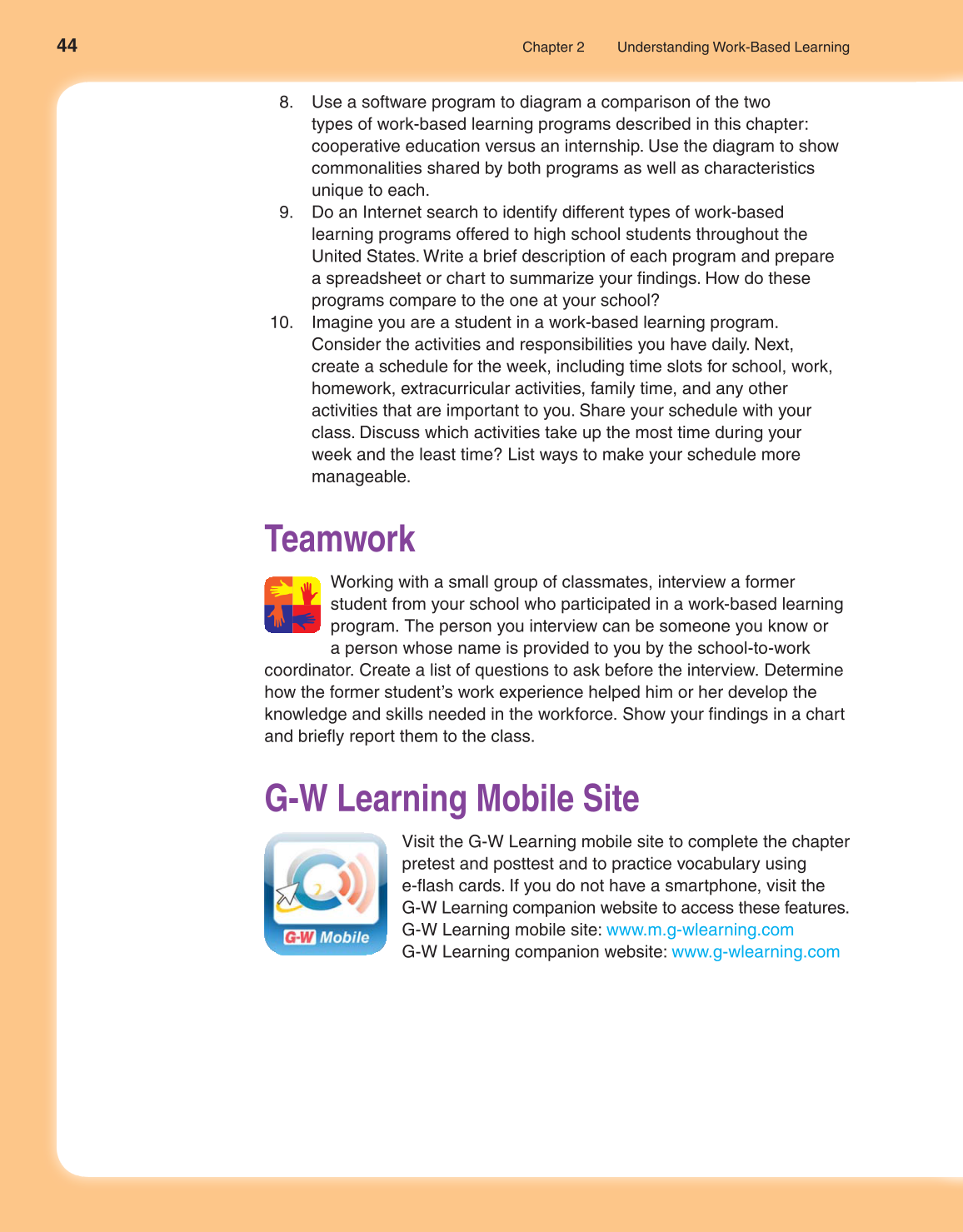44
Chapter 2 Understanding Work-Based Learning
8. Use a software program to diagram a comparison of the two
types of work-based learning programs described in this chapter:
cooperative education versus an internship. Use the diagram to show
commonalities shared by both programs as well as characteristics
unique to each.
9. Do an Internet search to identify different types of work-based
learning programs offered to high school students throughout the
United States. Write a brief description of each program and prepare
a spreadsheet or chart to summarize your findings. How do these
programs compare to the one at your school?
10. Imagine you are a student in a work-based learning program.
Consider the activities and responsibilities you have daily. Next,
create a schedule for the week, including time slots for school, work,
homework, extracurricular activities, family time, and any other
activities that are important to you. Share your schedule with your
class. Discuss which activities take up the most time during your
week and the least time? List ways to make your schedule more
manageable.
Teamwork
Working with a small group of classmates, interview a former
student from your school who participated in a work-based learning
program. The person you interview can be someone you know or
a person whose name is provided to you by the school-to-work
coordinator. Create a list of questions to ask before the interview. Determine
how the former student’s work experience helped him or her develop the
knowledge and skills needed in the workforce. Show your findings in a chart
and briefly report them to the class.
G-W Learning Mobile Site
Visit the G-W Learning mobile site to complete the chapter
pretest and posttest and to practice vocabulary using
e-flash cards. If you do not have a smartphone, visit the
G-W Learning companion website to access these features.
G-W Learning mobile site: www.m.g-wlearning.com
G-W Learning companion website: www.g-wlearning.com
